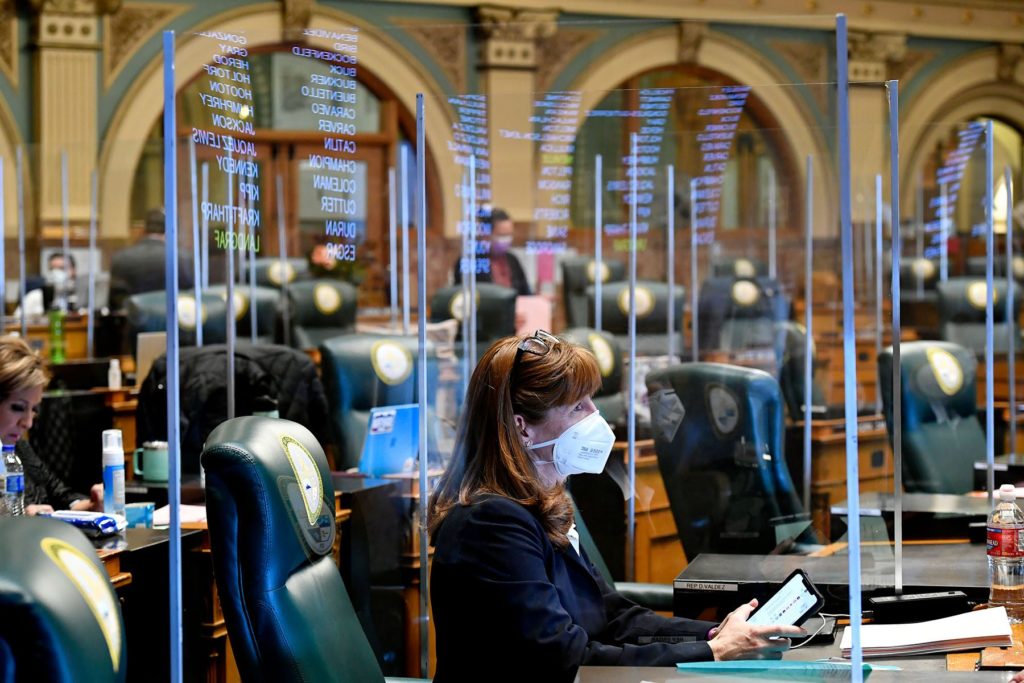Women’s representation has grown in the state as a result of efforts by groups and leaders to build a support infrastructure for women seeking elected office.

A rainbow forms above the Colorado State Capitol in Denver in June 2022. (MICHAEL CIAGLO/GETTY IMAGES)
With the results of the midterm election, women in Colorado will now hold 51 of the 100 seats in the state legislature, making it the second in the country to have a majority-women legislature. Twelve of the 35 Senate seats and 39 of the 65 House seats will now be occupied by women, 44 of whom are Democrats and seven of whom are Republican.
Colorado – which previously was one of a handful of states to have majority women in either the state House of Representatives or Senate — now joins Nevada in having its overall legislative branch predominantly occupied by women. Additionally, for the first time in history, the top three leadership positions will be occupied by women, with Julie McCluskie serving as the House speaker, Monica Duran as the majority leader and Jennifer Bacon as the assistant majority leader.
Kelly Dittmar, the director of research at the Center for American Women and Politics (CAWP), noted that the new representation of women in Colorado is significant, but it is not a drastic increase. That is because Colorado already had a high level of women representation and had received a high ranking from CAWP because of this.
Dittmar attributes this to the work that has been done in Colorado for many years to build a support infrastructure for women seeking elected office. She credits groups like the White House Project, Emerge, as well as elected women officials themselves, who have been intentional about creating a pipeline for other lawmakers.
“Women have had a significant influence on the policies in the Colorado legislature,” Dittmar said in an interview with The 19th. She also noted the importance of women’s perspectives and lived experiences being included in policy conversations.
Although across the country, there are barriers for women – especially for women of color and women with young children who seek elected office – data shows that when they are elected, there are policy implications that include more robust paid family leave policies and guaranteed paid sick days. As the number of women in the Colorado statehouse grew, the Colorado state legislature was even able to garner overwhelming support for a paid family leave policy for lawmakers — becoming the first statehouse in the nation to establish one.
“When we think about these majority-women spaces, we should also be thinking about the diversity among women and their viewpoints, agenda and priorities,” Dittmar said.

Colorado Representative Julie McCluskie sits in the House chambers of the Colorado State Capitol during an emergency legislative session in November 2020 in Denver. (HELEN H. RICHARDSON/THE DENVER POST/GETTY IMAGES)
She continued: “It means that we can ensure that in more conversations, debates, committee hearings, we are more likely to ensure that women’s voices and perspectives are in the mix.”
Sondra Cosgrove, the executive director of Vote Nevada and a history professor at the College of Southern Nevada who has been studying the impact of having a majority-woman legislature in her own state, agreed with this perspective.
“Having a female majority has been more important for ensuring a female perspective is included in the writing in the passing of every bill rather than having specific ‘women’s bills,’” Cosgrove said.
Still, Dittmar noted that there is ongoing work to be done to ensure diversity of voices, even among women. She noted that when Nevada became the first state to have a majority-women legislature in 2019, they had only one Asian-American woman legislator. Since that time more Asian Americans have been elected to the state legislature, but at the time there was very little racial and ethnic diversity, Dittmar noted.
“When we build and look at these support infrastructures, we have to be cognizant that they don’t always equally serve all women along class lines, along race lines, and certainly not along party and ideological lines,” she said.